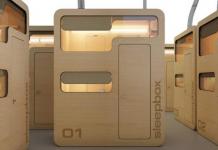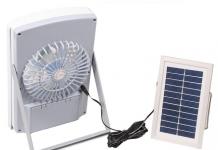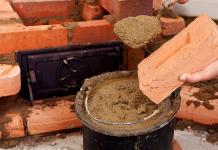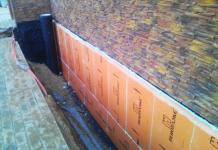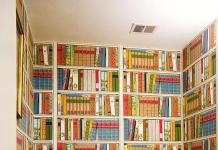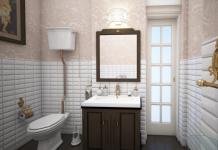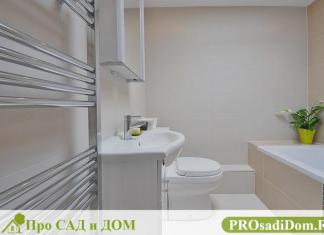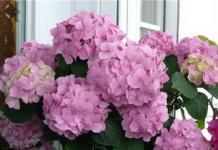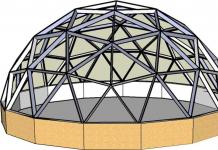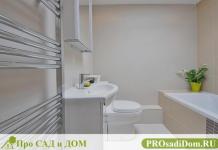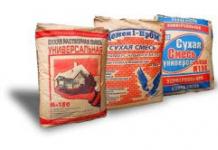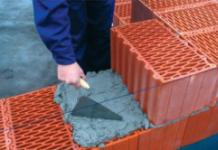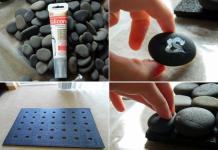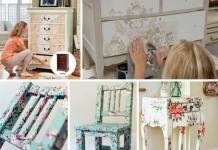Modern interiors cannot be imagined without the use of lighting elements. And if quite recently the purpose of various lamps was only to illuminate an apartment or house, now light acts as the main designer and creator of the unique look and atmosphere of the room.
When creating the system, LED strips, duralight cords, fluorescent lamps are used as a light source. The best choice in this case would be to use an LED strip.
Benefits of using LED strip:
- they are flexible, thin, they can be cut. This allows you to reliably hide the tape from the eyes in almost any design;
- most often tapes are produced on an adhesive basis, which makes their installation extremely simple;
- it is possible to use tapes with special controllers for mixing colors and creating almost any shade;
- light intensity can be adjusted with a dimmer;
- along with conventional tapes, moisture-resistant options are available that can be used for pool or jacuzzi lighting equipment;
- LEDs are inherently low power consumption, so you can leave the backlight on for a long time;
- do not require maintenance due to the long service life.
Why do you need lighting in the interior
Used in the interior of the apartment to achieve a variety of purposes:
- highlighting with the help of light a certain area in the room or a design element, for example, lighting an apron in the kitchen area;
- decoration or embellishment, such as mirrors or pieces of furniture;
- giving the room additional volume, height due to illumination. So, installing an LED strip under the ceiling will visually make the room taller;
- creating the necessary atmosphere in the house: festive, romantic, etc.
Illumination helps to create a unique interior, implement interesting design ideas, hide layout flaws and focus on the merits. Refusing decorative lighting in a room means depriving it of a fair amount of attractiveness and functionality.

ADVICE!When installing the backlight, it is necessary to pay attention to the harmonious combination of the color of the tape and the materials present in the interior. So, blue, white and other cool colors are well suited to metal products, but wooden surfaces look more advantageous in warm backlight colors.
Basic backlight use cases
LED strips have found their application for highlighting various interior elements. These can be cabinets, shelves made of various materials, decorating the pool area in a country house, installing LEDs on the wall behind the TV, interior lighting of drawers, or creating luminous compositions in the nursery. Among the main options for using LED tape, it is worth noting stairs and walls, furniture, kitchen area and curtain decoration.
stairs
Illumination of the stairs with LED strip serves not only as a decoration, but also ensures the safety of movement in the dark. You can install the LED strip in several ways: on the wall, on the side of the steps; under each step or through one; along the entire length of the step or, for example, only in its middle part; embed in the railing. Turning on and off the staircase lighting can be carried out both with a standard switch and with the help of motion sensors. When using the latter option, electricity is significantly saved, since the light turns on only if a person approaches the stairs.

It is very important to correctly direct the flow of light to the stairs. Otherwise, the shape of the steps may be distorted, which is unsafe when moving along them.
Walls
Wall lighting allows you to visually change the dimensions of the room, add “airiness” to the interior, highlight various plasterboard structures, for example, niches, columns, arches. Using the LED strip, you can highlight a picture or photograph, focus on photo wallpapers or panels, emphasize the texture of the material for wall decoration, for example, artificial stone.

In addition to the LED strip to illuminate the walls, you can use LED wallpaper. They are panels with a pattern, between which LEDs are fixed. Such wallpapers do not require gluing, they are attached to the wall with adhesive tape. Similar innovations are produced by OLED and Philips. Products are absolutely safe, easy to care for and allow you to create a unique and cozy interior.

Curtains
A modern design technique is the use of LED strip lighting for curtains. It allows you to achieve the effect of penetration of sunlight through the curtains, emphasize the structure of fabrics and visually "break" the boundaries of the room. The best effect is achieved when placing the tape in a niche for the eaves.

Furniture
You can also find application in any room for LED lighting of furniture with LED strip. With its help, you can highlight the bed in the bedroom, create a romantic or, conversely, passionate atmosphere. A sofa or armchair illuminated in the living room will seem to “float” in the air, which will add lightness and mystery to the interior. Glass shelves, both open and in cabinets, in combination with LED strip will create a radiant play of color and add appeal to the objects placed on them.

Kitchen
In the kitchen for LEDs, the following lighting scenarios are applicable:
- illumination of the working area with the help of an LED strip installed under the upper cabinets of the kitchen set;
- highlighting the kitchen apron from the inside. If the apron is made of glass or other transparent material, it turns into an independent lighting fixture. It looks very impressive;
- lighting inside cabinets with glass doors;
- creating the effect of a hovering kitchen set by installing an LED strip under the cabinets;
- highlighting individual elements with light, for example, holders for glasses.

When planning decorative lighting in a room, you should definitely take into account the type of interior being created. The use of colors in apartments decorated in the style of classics, ethnics or country is unlikely to be appropriate. The most advantageous here will look lamps that emit a warm yellow light.
On the contrary, in minimalist interiors, with elements of futurism and hi-tech, you can give free rein to your imagination and experiment with different color combinations. Although, it should be noted that the coldness and beauty of the metal are most successfully emphasized by white LEDs.
The most important rule when creating a lighting scheme is a sense of proportion. You should not make a Christmas tree out of the apartment and highlight everything that is possible. At the planning stage, you need to analyze all possible lighting scenarios, understand what is really necessary, what you can refuse without compromising the appearance of the room, and what will generally interfere with rest and relaxation.
ADVICE!To optimize the operation of the lighting circuit, you can use special devices - time relays. With their help, the backlight will turn on and off at a predetermined time.
The use of LED strips in the apartment allows you to create an exclusive look of the room, expand its boundaries, create the necessary atmosphere and mood. The possibilities of its use in decorative interior lighting are virtually endless. And ease of installation, variety of colors and durability leave all competitors far behind.
A rare modern interior is not complete without elements of additional lighting.
LED wall lighting is used as a light source to resize spaces to prioritize visuals.
Directional lighting sources can be LED strips, duralight cords and fluorescent lamps.
Benefits of using ribbons
 Flexible bands are easy to cut
Flexible bands are easy to cut Tapes are produced thin, flexible, they are easy to cut and fasten even in hard-to-reach places. The structure of the LED strip has a number of absolute advantages:
- adhesive base allows you to easily and quickly mount the tape anywhere;
- mixing colors to create any color shade;
- installing a dimmer will allow you to control the intensity of the light flux;
- in places with a high level of humidity, moisture-resistant tapes can be used;
- low power consumption;
- long service life.
Purpose of backlight installation
 Illumination puts emphasis on the right places
Illumination puts emphasis on the right places In the interior of an apartment, lighting can be used to create various effects, implement decorative solutions and achieve practical goals:
- with the help of directional light, you can highlight a certain zone, focus on a specific subject and separate zones;
- as a decoration;
- visual change in the volume, height or dimensions of the room;
- to create a certain mood.
With the help of skillfully mounted lighting, you can change the style of the interior, hide flaws in the design of the room. At the same time, the accent in the wrong areas or the wrong color scheme of lighting can spoil even the most successful repair.
 You can also illuminate the walls with special lamps.
You can also illuminate the walls with special lamps. Pay attention to the combination of color and tone of the lamp. Do not use cool colors in interiors with warm tones.
For example, yellow highlights on blue curtains will not give the effect of increasing space, but will give the curtains the look of dirty fabric. Ribbons of cold tones are perfect for metal products, warm shades are best used in natural wooden interiors.
How and where to highlight?
The purpose of lighting will help determine the color and tone of the LED strip. Where and how to use the ribbon for its intended purpose, while determining its functionality, is described in the table below.
The main places to use lighting are stairs, kitchens and curtains.
| Place | Functional | Place of installation | Breaker type |
|---|---|---|---|
| stairs | Illumination of flights of stairs and marches not only creates a certain atmosphere, but also serves to ensure the safety of movement. In order not to distort the shape and size of the steps with light, it is important to direct the lighting horizontally or vertically. | On the side of the steps on the adjoining wall. Horizontal stripes under each step or through one. From the underside of the railing. | Standard manual or motion sensor |
| Kitchens | As an additional lighting of the working area and creating an atmosphere of comfort. | the lower border of the upper cabinets of the kitchen set; illumination of the apron of the working area from the inside; inside a shelf or cabinet near the back wall; highlighting individual elements with light, for example, holders for glasses. | Manual |
| Walls | Helps to visually change the dimensions of the room. Add volume to the interior; place light accents; separate zones. | specific object and texture of the finishing material. | With adjustable light level |
| Curtains | The effect of sunlight penetrating through the curtains; enhances the beauty of the fabric, breaks the boundaries. | It is best to place the tape in a niche for the eaves. | Manual with light level adjustment |
Installing LED strips is a simple process, anyone with a minimum set of building skills can do it on their own. 
 Stick the tape at a height of 2 m from the floor
Stick the tape at a height of 2 m from the floor There are a few simple rules to help avoid unpleasant surprises:
- The light will spread most evenly if the tape is glued at a level of 2 m from the floor surface.
- If you want to get a quiet subdued light, place the lamps as low as possible.
- By placing the tapes vertically along one wall of the room, you can visually stretch the room. For more information about installing lighting, see this video:
Hue also influences the visual perception of distance and volume: warm colors bring objects closer, while cool lighting enlarges space.
And, perhaps, the most important rule when installing light elements is a sense of proportion. Use a relay with a timer, with its help, the backlight of a wall or stairs will turn on and off at a certain time.
Glass shelves with LED lighting are not only beautiful, but also convenient. By choosing the appropriate brightness of the LEDs, you can get an exclusively decorative effect or use the shelves as night lighting. Interior designers widely use such shelves in their practice to visually increase the space of the room.
Despite the apparent simplicity of the design, a number of technical solutions are required for really high-quality and beautiful lighting.
Mounting materials
To make the backlighting of the shelves with an LED strip with our own hands, we need:
- glass shelf;
- actual tape;
- 12V power supply;
- soldering iron, mounting wires;
- drill or screwdriver;
- aluminum U-shaped profile.
Features of LED lighting glass shelves
Outer edge processing
Because glass has a low refractive index, it acts as a light guide. If you install a diode strip on the back of the glass shelf, the LEDs will be projected onto the front edge. When using powerful LEDs, a shelf at eye level can even dazzle.
For a beautiful uniform glow, the outer edge of the glass shelf should be frosted. The easiest way to matte is to sand the edge with fine sandpaper, which will create a lot of scratches. Light reaching this area will be reflected many times, providing a uniform glow over the entire surface.
Installation of LED strip
 You can attach the LED strip directly to the back wall using double-sided tape. The disadvantage of this installation method is the illumination of the surrounding space. To focus the light, use a U-shaped aluminum profile. In hardware stores, you can purchase a special profile for such shelves.
You can attach the LED strip directly to the back wall using double-sided tape. The disadvantage of this installation method is the illumination of the surrounding space. To focus the light, use a U-shaped aluminum profile. In hardware stores, you can purchase a special profile for such shelves.
As a budget solution, it is acceptable to use an ordinary U-shaped aluminum profile.
 Such a profile at the same time will be an additional heat sink. There is no need to fix the profile to the body. If desired, you can fix the structure directly to the glass shelf by applying a drop of glue or liquid nails at two or three points.
Such a profile at the same time will be an additional heat sink. There is no need to fix the profile to the body. If desired, you can fix the structure directly to the glass shelf by applying a drop of glue or liquid nails at two or three points.
business design
The use of lighting in showcases and sales cabinets can significantly change the conversion of potential buyers.
How to make LED lighting in a sales cabinet with a unique design? In addition to the classic luminous edge on the very surface of the glass, you can apply a pattern that will glow, attracting attention.
By combining reflective materials with a piece of diode tape and ordinary glass, you can create creative solutions.

Interior lighting
In addition to illuminating glass furniture elements, diodes are also widely used to illuminate the interior of cabinets. For LED cabinet lighting, the recommendations for choosing LED strips remain the same.
Features of mounting light on the interior space of furniture - the need to automate the inclusion of diodes when the door is opened. This can be done using a simple button built into the end of the door leaf. The only condition is that the button must be of the opening type. That is, when pressed, the contact opens.

Choosing the Right LED Strip
If you plan to make glass shelves illuminated with diodes in the bathroom or in the kitchen, it is not recommended to use an ordinary LED strip due to the risk of condensation and short circuits.
There are three main protection classes for lighting tapes:
IP 33- ordinary, for indoor use.
IP65- has a silicone coating for high humidity conditions, for example, for the kitchen.
IP67/68– full waterproofing, can be used even in showers and pools.
Matrices are well suited for decorative light cmd 3528. A small power allows you to power such a tape from any 12V power supply with a power of 1-2A, saving on an expensive power driver.
Making shelf lighting with your own hands not only significantly saves the budget, but also allows you to apply individual design and technical solutions.
Most of all, the LED strip is suitable for stretch and plasterboard ceilings.
What is LED strip
An LED strip, or, as it is also called, duralight, has the form of a flexible conductive board with LEDs and resistors placed on it, which are responsible for the resistance.

Such a tape has a width of 8 to 10 mm and a thickness of 2 to 3 mm. If we are talking about a multi-color tape (RGB), then a controller is also attached to it, which will allow you to adjust the intensity of the glow and switch the lights, creating an atmosphere in the room that suits the mood.
How to make LED lighting with your own hands
When installing an LED strip, in addition to the strip itself, you will also need a power supply and connectors to connect the strip.
When choosing a power supply, you need to focus on its power. To do this, you need to make the appropriate calculations using the data given in this table:
To calculate the required power, it is necessary to multiply the power of one meter of the LED strip by its total length:
W/m x L tape = W
After the calculation, it is necessary to add another 20% to the result, because the “end-to-end” power supply will not be enough for the power supply and some margin is needed for its full and safe operation.
And now a little about connectors. As mentioned above, they will be needed to connect the tape to the power supply, as well as to other tapes, since many users are not limited to the standard tape size of 5 meters and add the same or even several tapes to it.

To connect with the connector, you do not need to resort to any tricks, you just need to move the clip, putting the connector on the edge of the tape and returning the clip to the opposite position. After that, you just need to correctly connect the wire from the connector to the power supply.
In some cases, a soldering connection method can be used, which, by the way, is much cheaper than buying connectors. The connection is very reliable and durable.

Important! When soldering contacts, it is very important to heat the soldering iron to a maximum of 250 degrees and solder no more than 10 seconds.
Connecting the LED strip
There are two types of LED strips:
Single color ribbon
Multicolor (RGB)
The principle of their connection is somewhat different, so it makes sense to consider their installation separately.
How to connect a single color LED strip
To connect a regular tape 5 meters long, you need to connect the wires of the power supply to the wires of the tape. There is a standard wire marking, indicating “+” in red and “-” in black. If there is no marking, you can measure the polarity with a multimeter, however, even if the polarity is not observed, nothing will happen to the tape, it simply will not glow.
If you need to connect more than one tape, then you need to place them not in series, but in parallel, because when connected in series, the tape can overheat and burn out.
This is how the connection diagram of one LED strip looks like:

This view has a parallel connection of two tapes:

You can also use two power supplies and connect two tapes:

In some cases, when there is a need to connect a small piece of tape, it can also be connected in series. But it is necessary to check whether the voltage drops or not, if the readings remain unchanged, then such a connection will be safe.
The cutting of the tape is carried out in places specially designated for this, where scissors or something else is drawn.
Info! The tape is cut every 3 LEDs; if it is cut incorrectly, not one LED is disabled, but the whole section of the tape at once.

Attaching a piece of tape is done using connectors or soldering.
How to connect LED multicolor RGB strip
A multi-color LED strip differs from a single-color one in that it needs a controller, which becomes another link in connecting the RGB strip - controller - power supply.
Connecting the controller to the power supply is similar to connecting a single-color tape: the wires are connected in accordance with the polarity. But connecting the tape to the controller is somewhat more complicated, since not 2, but as many as 4 wires are involved in the connection, 3 of which control the color intensity, and the 4th is responsible for supplying power:
B - blue
R - red
G - green
V+ - common
The general picture of the connection looks like this:

As with the connection of a single color ribbon, when using several ribbons, a parallel connection is necessary. However, since RGB tapes consume more current, you need to use an RGB signal amplifier in addition to the controller and power supply. This device allows you to regulate the intensity and uniformity of the glow of the LEDs.
A second tape is connected to the RGB amplifier, and the amplifier, in turn, is connected to the power supply. It is advisable to use a separate power supply unit for the amplifier, because if there is one, then its power supplying both the amplifier and the controller should be higher.
The ideal connection diagram for 2 RGB strips looks like this:

And this is what it looks like in practice:

Advice! Having dealt with the diagrams and the principle of connection, it is necessary to assemble the tape on the floor and plug it into the network to check its performance. If everything is in order, then you can proceed with its installation on the ceiling.
Do-it-yourself LED lighting installation
Most often, for a duralight device, a special drywall niche is erected on the ceiling, which will hide the LED strip itself, and then the light from it will not enter the room directly, but will be reflected from the ceiling. It is because of this soft glow that LED strips are so successful.

Plasterboard niche installation
The plasterboard niche looks like a cornice that runs around the entire perimeter of the room or along the edge of a multi-level ceiling. This cornice, consisting of plasterboard sheets, is attached to a crate of metal profiles.
Before installing the crate, you need to make the correct markup: first you need to step back from the ceiling along the wall down 70-100 mm and draw a flat horizontal line. To do this, you need to use the level. Then you need to attach the profile along the drawn line.
To mount the second profile, you need to step back from the wall about 20 cm and also draw a line on the ceiling parallel to the first. A profile is attached along it and, thus, an internal perimeter is formed.
Then, retreating from the starting profile by 40 or 50 cm, you need to start installing profile segments that form the crate. The length of such segments must correspond to the distance between the base profile and the profile lying at the base of the ceiling.
It looks like this:

The main profile is connected to the starting one with the help of small segments (up to 300 mm), and the bearing cornice will lie on the ledges that are visible in the photo.
Plasterboard sheathing
After the profile is ready, it is sheathed with drywall sheets: first, its vertical part, which allows you to hide the wiring. After that, the lower part is also closed, and the following construction is obtained:

Installing a cornice is a rather laborious process, so you can choose an easier way and install a plinth (fillet) on the ceiling for LED lighting.
It looks like this:

Here you can see that it does not completely cover the space between the wall and the ceiling, this is necessary so that the light from the backlight is visible.
And here is the layout of it:

The plinth is fastened very simply, sometimes even with putty or glue. It all depends on the surface to which it will be attached.
Attaching the Tape
When absolutely everything is ready, you can begin to attach the tape. To do this, be sure to clean the surface with alcohol and stick the tape. Usually for this it is enough to peel off a special strip on the back of the duralight and carefully press it against the wall.
Important! If the tape will cover the entire perimeter of the room, then it should not be strongly bent (no more than 2 cm).
To mount the controller, amplifier and power supply, special niches must be provided in advance.
Do-it-yourself LED backlight installation requires responsibility and some knowledge, which can be easily gained by watching a few videos and carefully reading all the instructions regarding the duralight installation process. It does not take much effort to decorate your home with one of the best design ideas.
Video description of the LED strip device and the principles of its control:
Installing a drywall niche to illuminate the ceiling with LED strip:
Correct connection of the LED strip:







Wardrobe - furniture that is present in the atmosphere of each apartment. To turn an ordinary piece of furniture into a highlight of the interior, an LED strip in the closet will help.
Features and benefits of cabinet lighting with LED strip

Lighting the interior of the furniture will diversify and refresh the interior of the room. LED cabinet lighting is used not only as a decorative technique, but also has a practical function. Often, the storage module occupies the darkest place in the room, so in the morning and evening hours the contents of the shelves are not visible, to access things you need to turn on the light in the room. The ribbon with LEDs will make it easy to find the necessary thing on the illuminated shelves, even in the dark.

In terms of performance, LED backlighting prevails over halogen counterparts. The key benefits are longer service life and lower power consumption.
The advantages of LEDs are also:
- compact dimensions;
- low operating voltage;
- impact resistance;
- vibration resistance;
- the ability to adjust the brightness of the light flux;
- environmental Safety;
- fire safety.
What you need to mount the LED strip in the cabinet

To equip the cabinet lighting, in addition to the strip itself with diodes, you will also need other elements of the lighting system - a power supply, a switch, dimmers, and so on.
LED strip - what is it: types, characteristics
The LED strip is a flexible bar, on one side of which there are conductive copper tracks, LEDs and current-limiting resistors.

LEDs are a lighting element consisting of semiconductor crystals enclosed in a housing with contact leads and a light-forming lens. When connected to the mains, LEDs convert electrical energy into a luminous flux. The intensity of the emitted light directly depends on the technical parameters and the chemical composition of the LED.
LED strips are classified according to many criteria, the fundamental parameters when choosing a product are:
- glow type;
- direction of the light flux;
- supply voltage;
- LED density;
- power;
- moisture protection.

According to the type of glow, monochrome and color LED strips are distinguished. Monochrome stripes highlight only one color of the glow. The standard colors are:
- blue;
- green;
- red;
- yellow;
- white.

In the designs of multi-color LED strips, multi-chip LEDs are used, each of the crystals emits a certain color of light. The multi-color strip has more possibilities in terms of design applications.
According to the direction of the light flux, LED strips are divided into two main types
- frontal;
- end.
Front glow tapes create a scattering angle of up to 1200, thanks to which they have gained wide popularity among consumers. End LED strips are less in demand, the angle of dispersion of the light flux does not exceed 900.

Supply voltage is an important parameter for every electronic product. In the modern market of electronic goods, LED strips are presented, operating on direct and alternating current. The power of the light strip is related to the number of diodes, their type and supply voltage.
The density of the placement of LEDs is an indicator on which the power consumption and brightness of the light flux depend. The number of diodes per linear meter of the strip can be 30,60,120 and 240.

According to the degree of moisture resistance, LED strips are divided into open and closed type tapes. The protection class is denoted by the letters IP and a two-digit number, the first indicates the degree of protection against dust, the second - the level of protection against moisture. Open-type LED strips are designated as IP 33. On the front side of the strip there is a transparent protective lacquer coating, which provides only dielectric protection.
Closed strips are marked IP 65 and IP 68. IP 65 LED strips are characterized by an average level of moisture protection and can be used as kitchen cabinet lighting. Protection is provided by a transparent epoxy resin coating.

IP 68 marking tapes are enclosed in a PVC tube and filled with epoxy resin. Double protection provides reliable protection against moisture, which allows the use of products in rooms with high humidity.
LED backlight brightness control - why do you need it, what are there
The brightness control is a component that allows you to adjust the intensity of the light glow. Dimmers are used to regulate the flow intensity of a single-color strip, controllers are used for multi-color strips.

There are several types of LED controllers:
- stationary;
- remote.
The stationary controller is an affordable non-portable device equipped with a single program that ensures a smooth flow of one color into another.

Remote controllers allow you to adjust the brightness of the glow from a distance. Devices run on batteries or rechargeable batteries. The standard remote controller has the following features:
- choice of glow color;
- change in the brightness of the light flux;
- regulation of the frequency of color change;
Controllers with an infrared and radio frequency remote control are presented on the electronic goods market.

The principle of operation of the infrared controller is similar to that of a television remote control, the device is supplied complete with an infrared receiver, the selection and switching of programs occurs after the signal is transmitted from the remote control to the infrared receiver.
A controller with a radio frequency remote control is the best option for regulating the intensity of the light flux. The LED strip can be controlled even from another room.
Dimmers differ not only in the way they are controlled, but also in their operating voltage and power. For decorative cabinet lighting, it is better to use controllers with a power of 72 W and an operating voltage of 12 V.
Power supply for LED strip
Power supplies are designed to supply diodes with electricity and stabilize voltage parameters. To power the LED strips, electronic DC and AC transformers with an output voltage of 12 and 24 volts are designed. The choice of power supply is based on the technical and operating parameters of the LED strip.

Power supplies for LEDs vary according to the type of execution. On the electronics market, there are power supplies in plastic, aluminum and metal cases. The plastic case is the best option for organizing lighting inside the cabinet. The aluminum tight case does not pass water and condensate therefore it can be applied in damp rooms.
According to the method of cooling, power supplies are divided into devices with active and passive cooling. In the first case, the design of the transformer provides for the presence of a fan mounted in the device case. The main disadvantage of this cooling method is the fan noise. Passive cooling is provided by perforation of the case.
Types of switches for LED lighting in the cabinet

The following types of switches are designed to connect LED strips:
- mechanical;
- contact;
- remote;
- sensory.
Mechanical "knife switches" are distinguished by their simple design and affordable price. To turn on / off the lighting system, press the button on the device.

Contact switches are equipped with a sensor that allows you to set the time to turn on and turn off the light in automatic mode.
Installing a remote "switch" provides the ability to control the LED lighting system remotely.
Sensor devices are an innovative device that is very popular. The key difference between the touch switch and other “knife switches” is the presence of a sensor that responds to movement. To turn on or turn off furniture lighting, just slide your hand across the instrument panel.
Mounting locations for cabinet LED lighting

There are a lot of options for placing furniture lighting. The LED strip can be located on the inside of the ceiling or cabinet walls, under the bottom, on the outer, outer and end surfaces of the shelves.

The installation of the LED strip on the surface of the cabinet is carried out with the back side, which contains a special adhesive layer. For fixing, it is necessary to dismantle the protective coating from the adhesive side and press the tape to the selected location.




